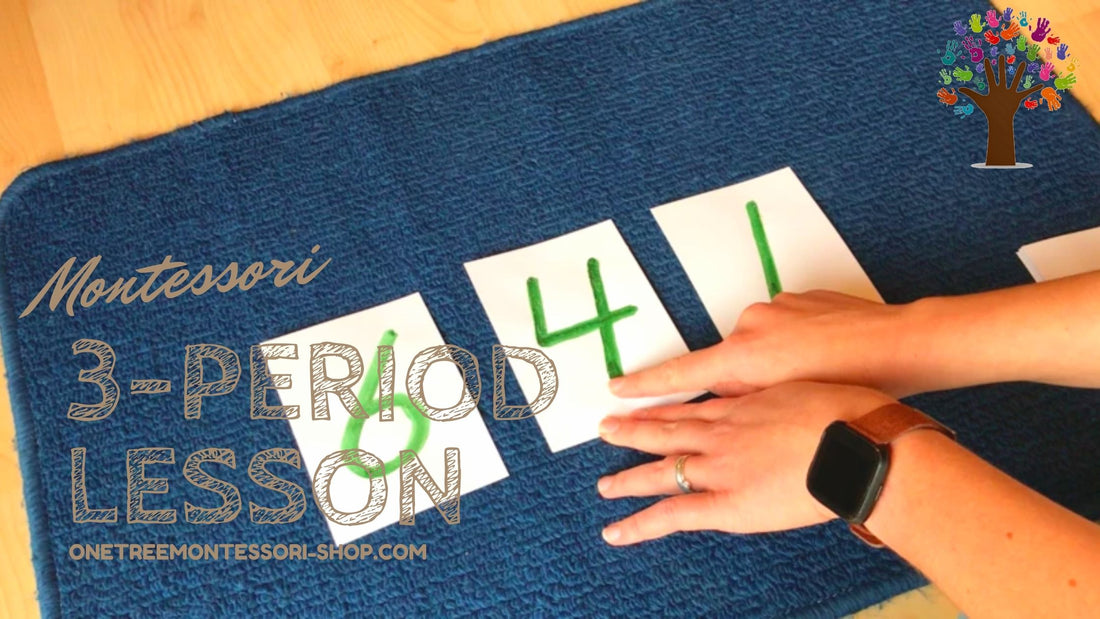
3-Period Lesson
Share
What is the 3-Period Lesson?
The 3-Period Lesson is used to teach children vocabulary. This method was adapted by Dr Maria Montessori from the writings of Dr Édouard Séguin, who worked with children with cognitive impairments in France and later in the United States.
The three steps mirror natural learning, supporting the development processes of young children. The interactive nature of the 3-Period Lesson uses all senses, ensuring mental stimulation and interest.
In a Montessori classroom, the 3-Period Lesson is routinely used to teach new words and concepts. But it's not hard to do, even at home - and with a little practise, you can give a quick lesson at any point during the day.
How Do You Do a 3-Period Lesson?
As the name suggests, there are three steps:
- Naming
- Recognising
- Recall
Here's a quick overview of how to do it. For the full presentation write-up, go here.
Each step uses different mental abilities and builds on the previous one. Together, they help the child form strong mental maps of the concept they're learning.
If you have a child, chances are that you actually teach them new words all the times. Think of seeing animals next to the road, or simply talking around the dinner table. Because you repeat certain words more often, your child slowly learns to associate those names with those things.
To purposefully teach new words using the 3-Period Lesson, you just need a few minutes every day. Make sure you have a quiet spot where you won't be disturbed, and that both you and your child are in a good mood.
Step 1: Naming
Start by laying out three distinctive objects (feel free to involve your child in the choosing). You always want to have at least one object they already know a little. Two would be better - it's just so much easier to learn one new thing only.
Name each object individually, letting your child copy you. Where possible, get them to handle/touch each one. Repeat this often, mixing up the order to avoid mere memorisation.
When to move on: when the child says the names with you (instead of after), even when the order is mixed around.
Step 2: Recognition
This is the most important part! It can easily take a few days. A greater number of short rounds, spaced out over time, is most effective.
At the core, you want the child to recognise (i.e. identify) the object you name. This can be done simply by asking them to "show you ...". To extend the learning fun, however, be as creative as you want!
Ask the child to trace, hide, give away, bring back, flip over, put on their head, swap around or find the object with closed eyes. If they get it wrong or are unsure, do a quick repeat of Step 1 before carrying on with the recognition task. Make sure to mix up the order every now and then.
If they really struggle, you may have moved on too soon. Repeat Step 1 in a positive manner, end the lesson and try again another time.
When to move on: when the child recognises the objects every time, and notices if they've confused them.
Step 3: Recall
This, the final step, should only be attempted when you are sure that the child will succeed. It's not meant to figure out whether your child knows the words (you can easily see that during the second period/step), but rather to consolidate the knowledge and make sure it sticks.
Recalling a concept from memory is a lot harder than recognising familiarity, so be sure to have practised a lot. Then, ask the child to name each object as you point to it. Mix up the order a few times. If they get confused, simply return to Step 2 for a while longer.
The 3-Period Lesson can be used for teaching any words or concepts! From letters or numbers over object qualities like rough and smooth to grading from shortest to longest - the possibilities are endless.
For example, you can use a piece of sandpaper and a piece of plastic. Introduce these objects as rough and smooth, while allowing your child to experience each texture. Once your child has grasped the concept of rough and smooth, a piece of cardboard can be introduced, resulting in a gradient of rough, smooth, and smoother.
While you want to challenge your child so they can grow and develop, avoid overwhelming them with too many new objects at a time, or moving too fast through the steps. Success makes learning easier than failure does.
So, enjoy the quality time with your child and help them learn new things!
